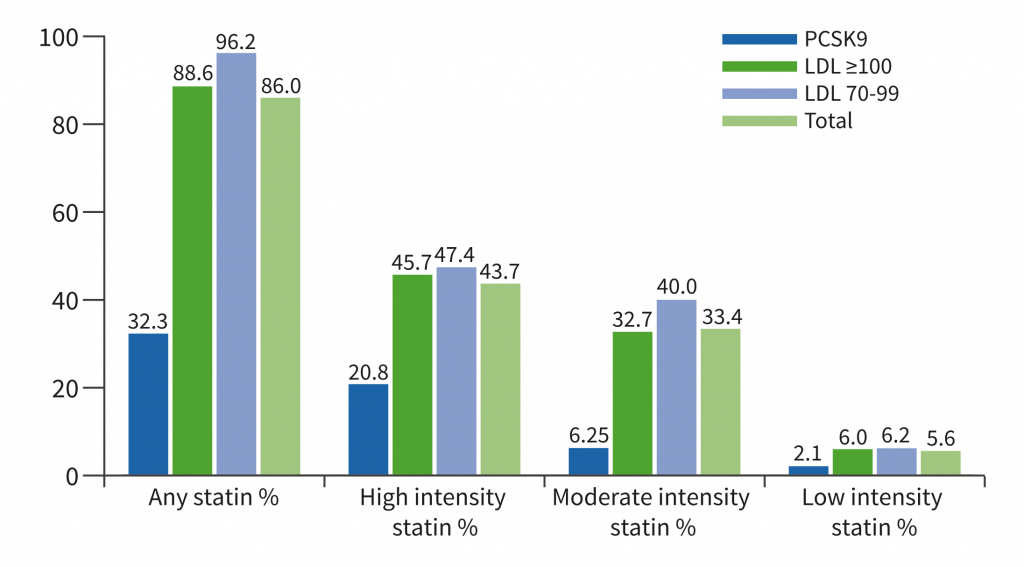The randomised, parallel PARTNER 3 trial aimed to evaluate TAVR compared with SAVR in low-risk patients with symptomatic severe aortic stenosis. A total of 1,000 patients were enrolled in the study with a median follow-up of 1 year. Mean patient age was 73 years, 30% of patients was female, and 31% had diabetes mellitus. The mean Society of Thoracic Surgeons (STS) risk score was 1.9% (score <4% denoted ‘low-risk’, with higher scores indicating a greater risk of death within 30 days after surgery). The inclusion and exclusion criteria are outlined in Table 1. Primary endpoint of the study was a composite of death from any cause, stroke, or rehospitalisation at 1 year. Patients who were undergoing aortic valve replacement were randomised to TAVR using the SAPIEN 3 valve (n=503) or SAVR (n=497).
Table 1: Inclusion and exclusion criteria PARTNER 3 trial. Data from Leon et al. (2019)

STS, Society of Thoracic Surgeons.
The results showed that 8.5% of patients in the TAVR group vs 15.1% of patients in the SAVR group (P<0.001 for non-inferiority and P=0.001 for superiority) experienced all-cause mortality, stroke, or rehospitalisation that was related to the procedure, valve, or heart failure at 1 year. These findings were similar in all prespecified subgroups. The secondary outcomes of PARTNER 3 are outlined in Table 2.
Table 2: Secondary outcomes PARTNER 3 trial. Data from Leon et al. (2019)

NS, non-significant.
Although these results are very encouraging and make TAVR a realistic possibility for a much larger group of patients, the study did have some limitations, including the follow-up of only 1 year. Therefore, longer follow-up is required to assess long-term structural valve deterioration, particularly in a risk category where valve durability will be of greater importance.
Another landmark TAVR trial in low-risk patients was the Evolut Low Risk trial, assessing safety and efficacy of TAVR with the self-expanding CoreValve compared with SAVR [2]. A total of 1,403 patients were randomised 1:1 to either TAVR (n=725) or SAVR (n=678). Almost two thirds received the self-expanding CoreValve Evolut while 22.3% received the third-generation Evolut PRO. Follow-up was 1 year, mean age of the patients 74 years, and 35% of the population was female. In order to be included in the study, patients needed to have severe symptomatic aortic stenosis, their anatomy needed to be suitable for TAVR or SAVR, and the STS Predicted Risk of Mortality (PROM) score ≤3%. Those who had a contraindication for the placement of a bioprosthetic valve, a bicuspid valve, or a known hypersensitivity or contraindication to all anticoagulation/antiplatelet regimens were excluded from the study. The median STS PROM score was 1.9%, and 13% of patients had had a previous percutaneous coronary intervention. Previous coronary artery bypass grafting had been performed in 2.2%, 11% had cerebrovascular disease, 8% had peripheral artery disease, and mean left ventricular ejection fraction was 61%.
It emerged that the primary endpoint of all-cause mortality or disabling stroke was 5.3% for TAVR vs 6.7% for SAVR at 24 months (P<0.05 for non-inferiority and P=NS for superiority). All-cause mortality at 2 years was 4.5% for TAVR vs 4.5% for SAVR (P>0.05), and disabling stroke occurred in 1.1% of patients with TAVR vs 3.5% for those with SAVR (P<0.05). The secondary outcomes are shown in Table 3.
Table 3: Secondary outcomes Evolut Low Risk trial. Data from Reardon et al. (2019).

These findings suggest that TAVR with the self-expanding CoreValve Evolut is non-inferior to SAVR with regard to the primary endpoint of mortality/disabling stroke at 24 months for the treatment of severe symptomatic aortic stenosis in low-risk patients. However, some outcomes were higher on TAVR, such as the need for a permanent pacemaker – as was the case in the PARTNER 3 trial – and moderate-to-severe paravalvular leak.
Combining the Evolut Low Risk and PARTNER 3 trial findings, the results indicate that low surgical risk patients do just as well and perhaps even better if they are treated with TAVR instead of SAVR over 2 years of follow-up. The researchers clearly stated that longer follow-up is needed to be able to assess the impact of greater pacemaker insertion rates in the long-term as well as evaluating the risk of subclinical leaflet thrombosis and structural valve degeneration.
- Leon M, et al. Abstract 404-08. ACC 2019, 16-18 March, New Orleans, USA.
- Reardon MJ, et al. Abstract 404-09. ACC 2019, 16-18 March, New Orleans, USA.
Posted on
Previous Article
« Convincing evidence of the role of icosapent in reducing subsequent CV events Next Article
Similar rates of stroke/SE associated with DOAC vs warfarin use in obese non-valvular AF patients: Results from an observational registry »
« Convincing evidence of the role of icosapent in reducing subsequent CV events Next Article
Similar rates of stroke/SE associated with DOAC vs warfarin use in obese non-valvular AF patients: Results from an observational registry »
Table of Contents: ACC 2019
Featured articles
Acute and Stable Ischaemic Heart Disease
Arrhythmias and Clinical Electrophysiology
Substantial impact of temporary interruptions of warfarin versus DOAC
Smartwatch can detect atrial fibrillation with high degree of accuracy
Congenital Heart Disease
Heart Failure and Cardiomyopathies
Frequent use of beta-blocker after HFpEF hospitalisations in elderly patients without compelling indications
High 5-year survival rates for older HF patients without initial severe comorbidity
Pulmonary Arterial Hypertension and Venous Thromboembolism
Interventional Cardiology
Vascular Medicine
Lower rates stroke/SE with DOACs in frail non-valvular AF patients
Similar rates of stroke/SE associated with DOAC vs warfarin use in obese non-valvular AF patients: Results from an observational registry
Convincing evidence of the role of icosapent in reducing subsequent CV events
© 2024 Medicom Medical Publishers. All rights reserved. Terms and Conditions | Privacy Policy
HEAD OFFICE
Laarderhoogtweg 25
1101 EB Amsterdam
The Netherlands
T: +31 85 4012 560
E: publishers@medicom-publishers.com



